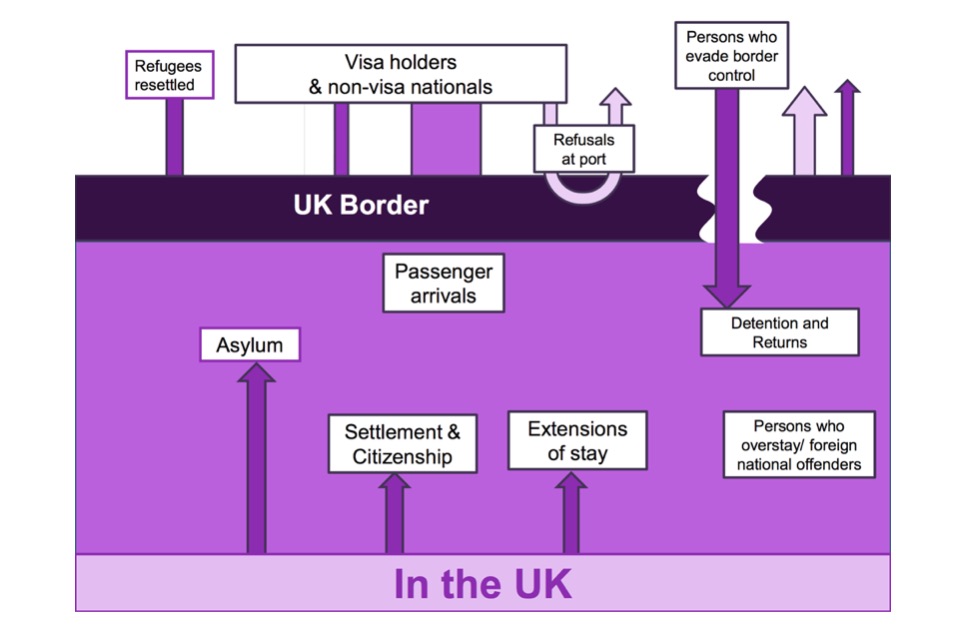Overview of the immigration system
Updated 21 March 2018
Back to ‘Immigration statistics, October to December 2017’ content page.
This is not the latest release. View latest release.
The Home Office’s ‘Immigration Statistics, October to December 2017’ release provides the latest figures on persons who are subject to United Kingdom immigration controls. All data below relate to 2017 and all comparisons are with 2016, unless stated otherwise.
The Immigration Statistics release provides information on the Home Office’s operation of immigration control and related processes, including the work of UK Border Force, UK Visas and Immigration, and Immigration Enforcement. Official statistics on long-term immigration, emigration and net migration are published separately by the Office for National Statistics (ONS).
Figures on performance against service standards and processing times are published as part of the Home Office Migration transparency data.
The Home Office publish a range of other research on migration, available at the Migration research and analysis page. Details on the developments and future plans for Home Office migration statistics can be found in Developments in migration statistics since 2010.
The diagram below provides a summary of immigration control for non-European Economic Area (EEA) nationals and does not include a reference to all aspects of immigration.
Summary of UK immigration system1,2

Chart notes:
- This flowchart provides a summary of immigration control for non-EEA nationals and does not include a reference to all aspects of immigration; the chart also excludes references to resettled refugees and appeals.
- Non-visa nationals seeking to enter the United Kingdom in a visa category or for longer than 6 months require a visa, whereas those seeking to enter the United Kingdom for 6 months or less do not.
